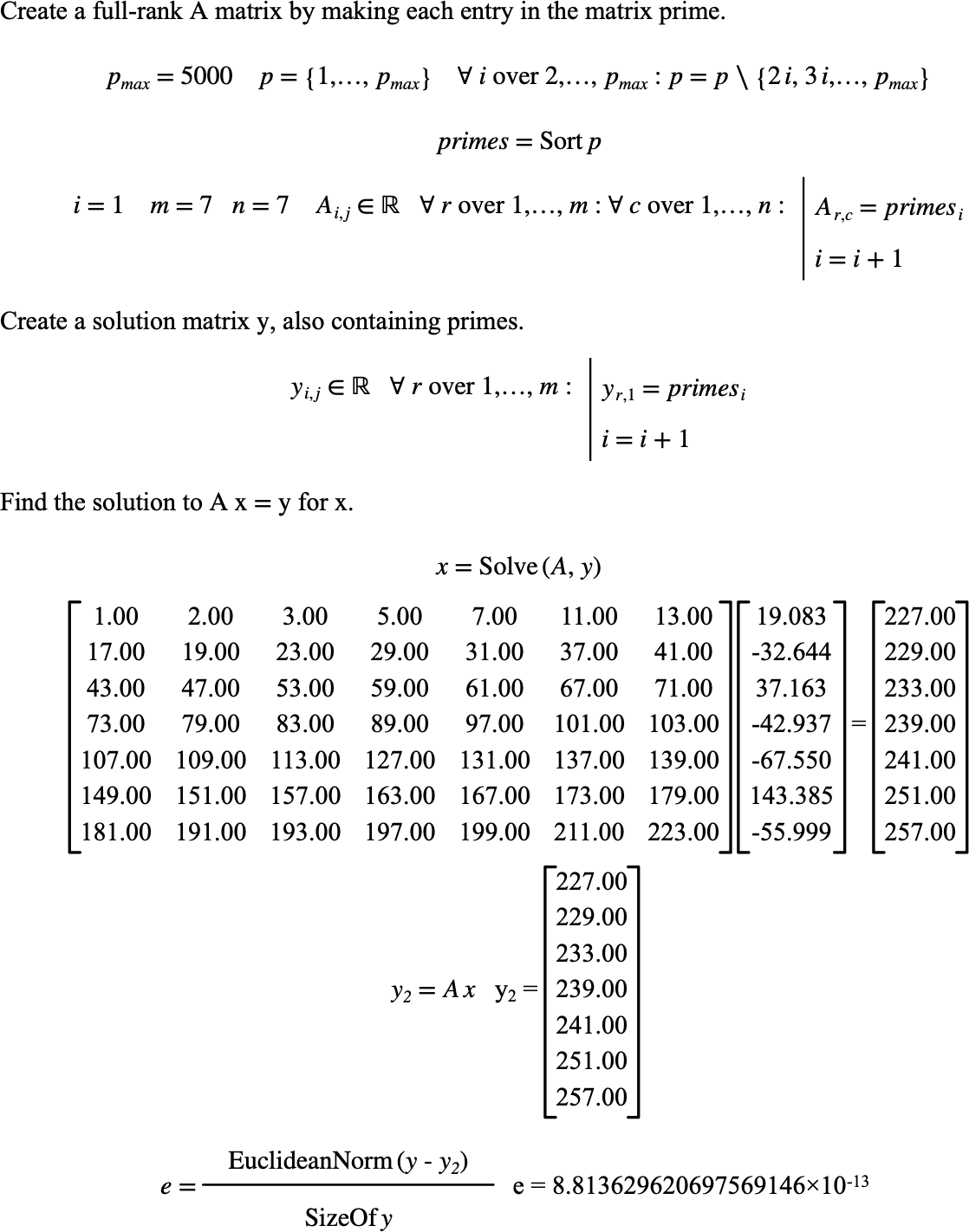\(\text{Solve}\)¶
You can use the \(\text{Solve}\) function to find the matrix \(x\) given matrices \(A\) and \(y\) where \(A x = y\).
You can use the \solve backslash command to insert this function.
The following variants of this function are available:
\(\text{matrix } \text{Solve} \left ( \text{<A>}, \text{<y>} \right )\)
The \(A\) and \(y\) matrices represent the terms to use to solve for matrix \(x\). Matrix \(y\) must be a column matrix with the same number of rows in \(A\). Matrix \(A\) must be a square matrix.
The function will return a column matrix containing one row for each column in \(A\).
To improve the accuracy of the solver, the \(\text{Solve}\) function will perform an equilibration on the matrix before performing LU factorization with row pivoting to find the solution. The equilibration operation is limited to powers of 2 so as to not reduce accuracy while lowering the condition number. To improve accuracy, the \(\text{Solve}\) will also use an iterative refinement algorithm to compute a solution.
Figure 206 shows the basic use of the \(\text{Solve}\) function.

Figure 206 Example Use Of The Solve Function¶
